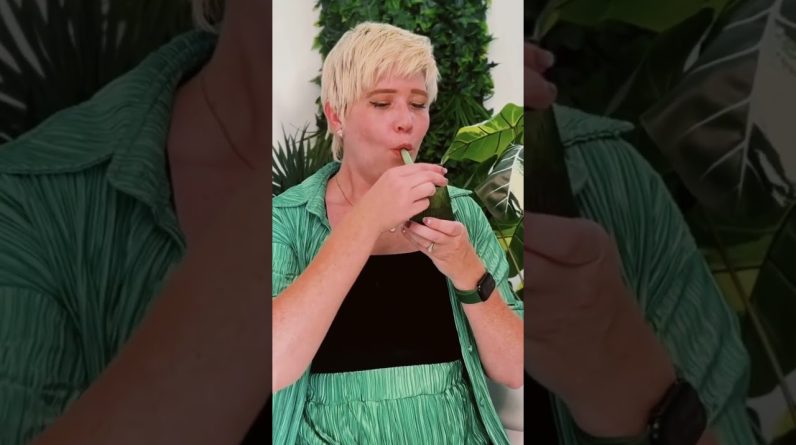
Sativa, Indica, and Hybrid – the Cannabis plants are rich sources of many aromatic and fascinating breeds. While some unique-looking cannabis plants can make attractive decorative pieces, others can be a great choice to try out in your smoke sesh.
Table of Contents
But how do you identify the properties of the cannabis plant you’re about to buy? Is it harvested? Does it contain flavonoids? How does it taste? Is it potent?
This article can be your ultimate guide to understanding different strains and their significant features, such as resin glands, fan leaves, flowering stage, red or orange hairs, etc.
What Is Red Weed?
Red weed is genetically a marijuana plant grown by combining three strains of cannabis, including Ruderalis, Sativa, and Indica. It is a rare breed among marijuana plants.
It is called red weed due to its Indica dominant hybrid effect, which provides notable relief to the human mind and body. Red weed is best known for its intoxicating smell.
Different Variants of Weed
Cannabis consumers love seeing potent and aromatic cannabis strains with colorful buds. Many growers believe that the appeal of cannabis plants is primarily due to colorful buds.
Many people highlight the role of bud colors in determining which cannabis plant has extreme potency. Cannabis red is not the only strain of the weed plant. There are various strains and colors in marijuana plants that indicate different properties.
Someone other colors in the cannabis plant include:
- Purple
- Blue
- Black
- Orange
- Yellow
- White
During autumn, it is common for trees to change the actual color of their leaves from green into rustic orange or red.
However, another strain of cannabis plant exhibits different colors together. That weed is called “Fruity Pebbles.” You can notice a rainbow of different colors in the plant as the main stem displays a dominant green from the cannabis buds.
The different colors are developed by the pigment called phytochemicals. Some other pigments, such as flavonoids and anthocyanins, are also responsible for creating colorful buds in cannabis plants.

Understanding the Role of Red or Orange Hairs on a Marijuana Plant
Weed with red hairs clearly indicates a high-quality or dank weed. In addition, the red hairs also show that the harvest of weeds was delayed.
The tiny orange hairs on red weed are present on every strain. First, however, one needs to understand the anatomy of the flowering plant to understand the red or orange hairs.
Most cannabis plants have the same anatomical structure as other plants. But the cannabis flowers of flowering plants are pretty complicated as that is where the red or orange hairs are.
The Anatomy of a Red Weed Cannabis Plant
Knowing the essential parts and structure of the red weed plant can be enough to understand the red or orange hairs on cannabis buds.
- Cola. It refers to the flower developing at the end of every branch. Cola also shows the biggest bud growing from the main stem.
- Bract. The bracts are small and teardrop-shaped leaves. They surround the sex organs of the plant, especially females. Sticky resin glands are present in the bracts. Moreover, it is a place where the pre-flowers develop before and during the flowering stage.
- Trichomes. Trichomes are crystal-like tiny bulging globes that envelope the calyx. These little globes consist of cannabinoids, including CBD and THC. They also contain aromatic oils called “terpenes.”
- Fan Leaves. These leaves are an important part of the harvest process. Fan leaves are the main ingredient in making edibles. These edibles are made from the extract of cannabis seeds.
- Calyx. The calyx is the bud. It contains sugar leaves. It is the most common cannabis bud that gets dried and smoked off later. Cannabis seeds are formed in the calyx. It also envelops the sex organs in both female and male plants.
- Stigma/Pistil. The white, red, brown, or yellowish color hairs growing from the pistil of plants are called stigmas. The stigma color highlights the male plant’s growth phase and harvested stage. In the female plant, the stigmas collect pollen from male plants.
Red or Orange Hairs on a Female Plant
Red hairs on the weed plants are called stigmas or pistils. They are the sex organs of female plants.
The primary purpose of these hairs is to collect the pollen from the male plants during the flowering stage. When the pistils collect the pollen, they are fertilized. This typically shows that the female plant is prepared to produce new seeds.
When the harvest time is near, the orange hairs turn red and get darker to brown.
Whenever growing red weed, one may think pollination is the main focus. However, that’s not true. Once the female plants collect pollen, they shift their goal to producing more flowers to grow less potent weed plants.
Most growers cut off the male plant in the growing field to avoid contamination and prevent pollination. As a result, female plants only focus on the flowering stage to grow more flowers and fewer seeds with less pollination.
More flower production leads to increased and better THC, cannabinoids, flavonoids, and terpene production.

Varied Taste, Smell, and Potency of Different Colored Pistils in the Flowering Stage
Pistils or hairs aren’t always orange or red. The pistils develop as white snowy hairs in the vegetative stage. As the flowering stage comes closer, the hairs start changing their color from white to yellow.
They later become orange hairs and progress further to fiery red. As a plant matures, the red color turns into deep blood red or brown. The color of the pistils completely depends on the type of strain. Some strains may even have purple hairs (e.g., Purple Haze, Purple Urkle).
Most people often associate bold colors of strain with extreme potent levels. It’s a common misconception. The strain’s color does not influence the potent level of the weed plant.
Buds like White Rhino and White Widow are two common strains that are harvested and grown to their maximum potential. As a result, their trichomes appear white that indicating they are powerful.
The anthocyanins serve as a powerful antioxidant component. Moreover, they are also known to contain anti-inflammatory and analgesic properties. In easy words, the anthocyanins do not influence the strong effect of cannabinoids like THC level, but it boosts strain.
Different colors of buds offer varying effects. Here are some other shades of hair with different effects, tastes, and smells.
Red
Red hairs are among the most common colors present in most cannabis. In addition, red weed is genetically widespread for its hybrid effect.
Strain Category: Indica-dominant Hybrid
Used for: Pain relief, appetite loss, and insomnia
Orange
The ratio and intensity of carotenoids in cannabis give the citrusy shade of yellow, gold, and orange hairs on weed. Intense alkaline conditions are needed to attain these colors. The orange hairs exhibit a strong citrus aroma.
Strain Category: Indica-dominant Hybrid
Used for: Mood enhancer
Yellow
Carotenoids produce warm colored tones in cannabis, including sweet potato, squash, and pumpkin. Cannabis strains of yellow color, such as Golden Lemon and Lemon Haze, contain more than 700 carotenoids that are converted into Vitamin A when consumed.
The strains with yellowish color are sweet and have a high-level of THC. Moreover, they have a citrus scent.
Strain Category: Sativa-dominant Hybrid
Used for: Creativity booster, sensory awareness, and dopamine release
Green
Every plant contains chlorophyll. Green is the most common predominant color of the cannabis plant. The high level of chlorophyll often boosts the production of other pigments. Marijuana strains that possess green as a dominant cannabis colo are Green Goblin and Green Crack.
Strain Category: Sativa-dominant Hybrid
Used for: Fight fatigue, stress reliever, and depression treatment
Blue
Weed flowers with hues of blues are rich in anthocyanins content. Fruits and seeds high in anthocyanins are often produced and harvested at lower temperatures. Some common fruits having blue strain are blueberries, raspberries, purple cabbage, and acai.
Some standard cannabis strains of blue are Blue Cheese, Blue Mystic, and Blue Haze.
Strain Category: Sativa-dominant Hybrid
Used for: Relief from muscle spasms, mind relaxation, and anxiety control

Does Pistils Indicate Cannabis Quality?
Apart from what most growers believe, pistils (hairs) aren’t an important and reliable indicator of cannabis quality. The quantity of pistils typically highlights the production of stigmas that are densely condensed cola.
A densely packed cola often indicates strong and high-quality cannabis. However, it’s not always true.
To determine the quality of any cannabis, use a magnifying glass and search for chalky or tan trichomes. The color of cannabis buds may add a pleasing appeal to your dispensary.
If you are looking for high-quality cannabis, make sure to choose cannabis that is filled with sticky trichomes.
Wraping Up wth the Red Weed
As the plant matures, the pistils on the cannabis tend to change color under different conditions and times. Different colors indicate different times to harvest a crop. We hope this article has provided you with ample information about red weed to make an informed decision for your next smoke sesh.





